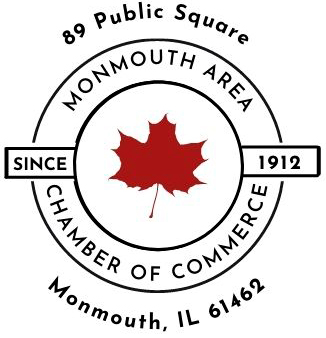Sanitation is something we take for granted these days. The only time most Monmouth residents give it any extra thought is during city-wide cleanup, when they are encouraged to haul unneeded items to the curb for pickup.
It’s a far cry from a century ago, when local homes were heated by coal, garbage disposals and home freezers didn’t exist, horses were still used for delivery and there was no weekly garbage pickup. That meant coal ash piled up, as did rotting food, horse manure and a lot of other unsavory refuse.
As recently as the 1960s (before the EPA), I remember visiting the city dump — on the site of the current waste transfer station — and seeing acres of strewn trash, from appliances to furniture to discarded foodstuffs. It was called the “sanitary landfill,” which meant the garbage got buried by large earthmoving machines, making way for a new layer of garbage on top.
As we wheel our handy plastic garbage and recycling bins out to the curb this week, we should pause a moment and be thankful for how far we have come in just a century.
Flash back to Mother’s Day weekend in 1919. Newspaper headlines reminded citizens that it was time for the “Annual Dirt Battle,” known officially as Health Promotion Week. Mayor John Hanley had mobilized forces, from the street department to the church ministers, physicians and parent-teacher organizations to make the Maple City a “garden spot of beauty.” He urged citizens to arm themselves with “rakes, shovels, mops, brooms, buckets, brushes, paint, whitewash, and dozens of other weapons familiar to household chiefs of staff.”
Even before the official start of the Week on Monday, the Harding School Parent-Teachers Club had sent out wagons — particularly on the south side — to pick up the winter’s accumulation of ash and other refuse. On Sunday morning, ministers preached about the virtues of cleanliness. Beginning on Monday, Health Promotion Committees, which had secured a number of wagons and teams, began picking up accumulated rubbish to deposit in “suitable dumping grounds.” Members of the Warren County Medical Society converged on the local schools to conduct health talks.
Mayor Hanley announced that a vacant lot east of the waterworks plant (North Sixth Street at East Detroit) could be used for dumping purposes, but that “special care must be taken to see that no obnoxious material of any kind, which might prove dangerous to public health, is placed there.” The Monmouth Atlas noted that “There are a number of other convenient dumps about the city, all of which can be used if proper health rules are obeyed.”
Today, city ordinances limit the amount of outdoor burning that can be done, but that was certainly not the case a hundred years ago, when Monmouth citizens were urged to “take this means to get rid of much of it.” While Monmouth did not have central community bonfire as did may cities each spring, its people were advised that “the work of hauling is considerably lightened if the match is applied to that pile of trash when it is raked up.”
Health Promotion Week also contained a campaign against the housefly. It was especially urged that all places which serve as breeding places, including garbage cans, be screened in and whitewashed.
While all this history may be mildly interesting, it pales in comparison to a front-page story that ran during cleanup week in 1919. Headlined “Dump Ground is Declared Insanitary,” the story says that after 105 residents of the northwest part of town had signed a petition, a representative of the state health department had conducted an investigation of an open landfill and declared it a menace to public health.

A former brickyard, the property at the corner of North E Street and West Franklin Avenue contained two large holes into which refuse had been deposited for years. According to the Atlas, the garbage included “tin cans, bottles, ashes, feathers, cleaning from barn yards and cleaning form hog pens.”
At one time there were two dead dogs floating in the water. The smell from the dead animals almost drove the residents from their homes. It was reported that the property teemed with rats and mosquitos, and that each spring the holes from the brickyard filled with water, which became stagnant and gave off an almost unbearable odor.

by Jeff Rankin
Editor and historian for Monmouth College. Avid researcher of western Illinois history for 40 years. FB and Twitter. jrankin@monmouthcollege.edu



